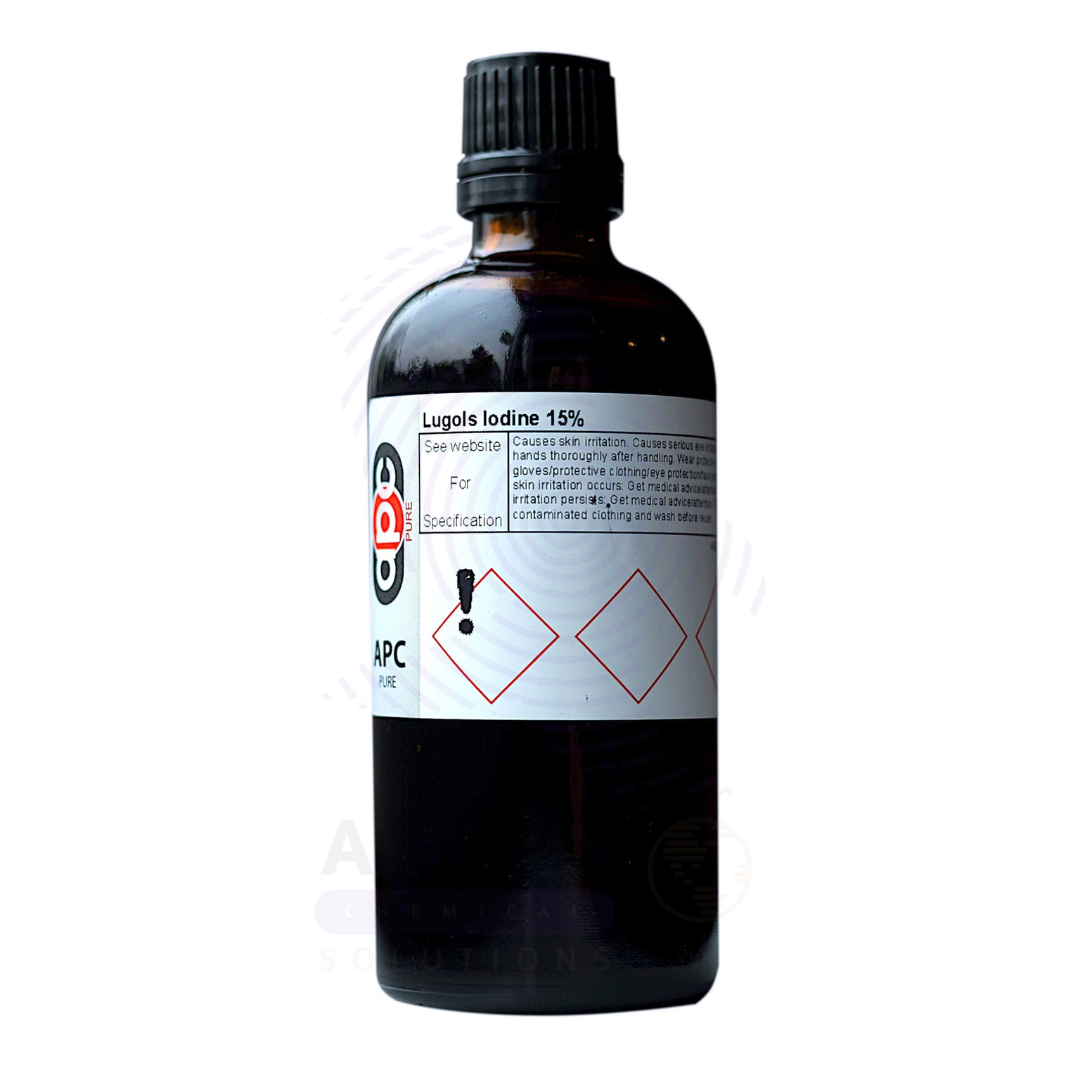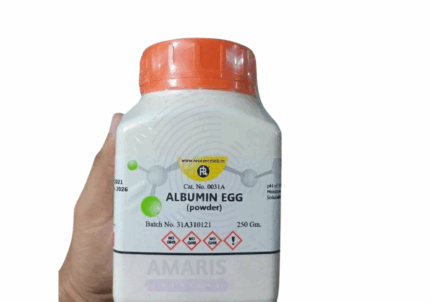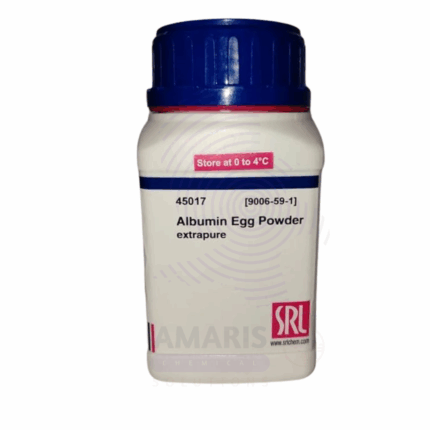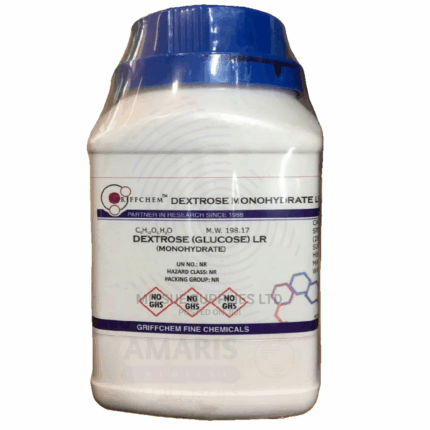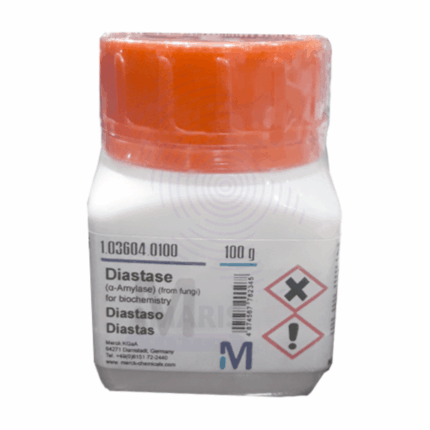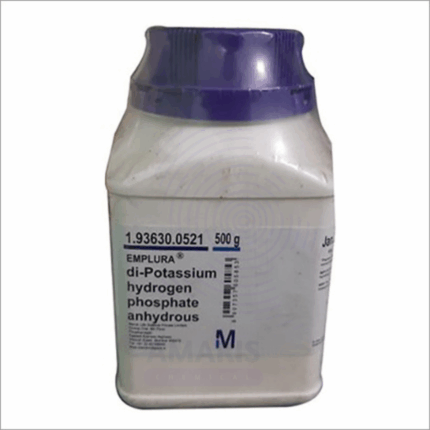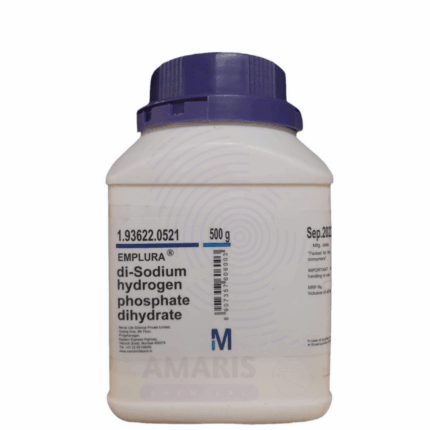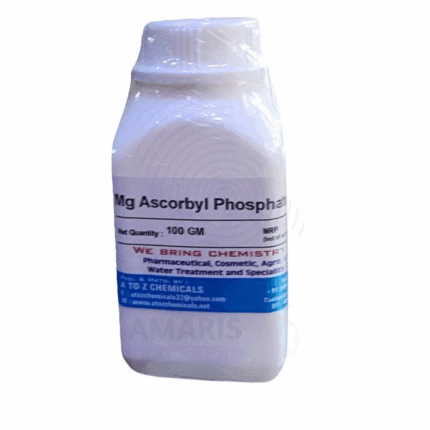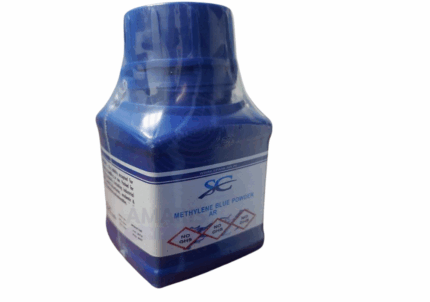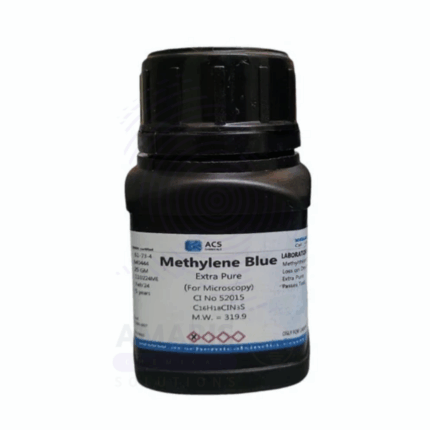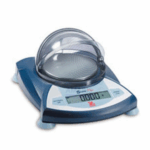
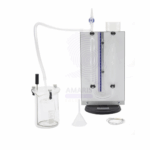
Lugols Iodine Extra Pure
$ 16.12 Original price was: $ 16.12.$ 15.98Current price is: $ 15.98.
Lugols Iodine Extra Pure is a superior-grade aqueous solution composed of elemental iodine and potassium iodide, known for its wide-ranging applications in laboratories, microscopy, and medical diagnostics. Valued for its strong staining properties, it is commonly used in biology to identify starch in plant cells and as a general-purpose cellular stain to enhance visibility under a microscope. Its extra pure formulation ensures high clarity, minimal impurities, and consistent results in sensitive applications. Additionally, it plays a role in preparing specimens, sterilization procedures, and certain medical antiseptic practices. Store tightly sealed, away from light and heat, to preserve potency.
Lugols Iodine Extra Pure
Primary Uses
- Starch Indicator:
- Commonly used to test for the presence of starch; turns blue-black in the presence of starch, making it essential in biological and food analysis.
- Microscopy Stain:
- Serves as a contrast stain in microscopy, especially for highlighting cell structures like nuclei in plant and animal cells.
- Antiseptic Agent:
- Used in lab settings for disinfection of surfaces and minor tools due to its iodine content.
Secondary Uses
- Glycogen Detection:
- Helps detect glycogen in cells and tissues, especially in histological studies.
- Protozoan Staining:
- Aids in staining intestinal parasites and cysts in biological and clinical samples.
- Redox Reactions:
- Occasionally used in redox titrations or as part of iodine-based redox systems.
| PACK SIZE |
1 Litre Glass bottle |
|---|
1. Basic Identification Attributes
- Chemical Name: Lugol’s Iodine
- Synonyms: Aqueous Iodine Solution, Iodine-Potassium Iodide Solution
- Composition:
- Typically 5% elemental iodine (I₂)
- 10% potassium iodide (KI)
- In distilled water
- Appearance: Reddish-brown liquid
- Odor: Characteristic iodine odor
- Solubility: Miscible with water
- Grade: Extra Pure (analytical grade)
2. Safety & Hazard Attributes
- GHS Classification:
- Skin Irritant (Category 2)
- Eye Irritant (Category 2A)
- Harmful if swallowed (Category 4)
- Hazard Statements (H-Codes):
- H302: Harmful if swallowed
- H315: Causes skin irritation
- H319: Causes serious eye irritation
- Precautionary Statements:
- P264: Wash hands thoroughly after handling
- P280: Wear protective gloves and eye/face protection
- P301+P312: If swallowed, call a poison center or doctor
- Personal Protective Equipment (PPE):
- Nitrile gloves, goggles, lab coat
- First Aid Measures:
- Inhalation: Move to fresh air; seek medical attention if symptoms persist
- Skin Contact: Wash with soap and water
- Eye Contact: Rinse cautiously with water for several minutes
- Ingestion: Rinse mouth, do not induce vomiting; seek medical advice
- Fire Hazards:
- Not flammable
- Use standard extinguishing agents for surrounding fire
3. Storage & Handling Attributes
- Storage Conditions:
- Store in a tightly sealed, amber bottle
- Keep in a cool, dry place away from light and incompatible materials (e.g., reducing agents)
- Avoid heat and direct sunlight
- Handling Tips:
- Handle with care to avoid skin or clothing stains
- Do not breathe vapors or ingest
4. Laboratory Applications
- Primary Uses:
- Starch detection: Forms a blue-black complex with starch
- Microscopy stain: Used as a contrast stain for plant cells and protozoa
- Iodometry (Redox titration): In analytical chemistry for redox reactions
- Secondary Uses:
- Disinfectant and antiseptic (non-laboratory, with appropriate dilution)
- Educational demonstrations of chemical reactions
- Nutrient test in biology labs (e.g., starch in food)
SAFETY PRECAUTIONS
Personal Protective Equipment (PPE):
- Wear a lab coat, nitrile gloves, and safety goggles.
- Work in a well-ventilated area or under a fume hood to avoid vapor exposure.
Handling:
- Avoid inhalation, ingestion, and contact with skin and eyes.
- Handle with care to prevent spills and staining.
- Wash hands thoroughly after use.
Storage:
- Store in a tightly closed container in a cool, dry, and dark place.
- Protect from light and heat.
- Keep away from incompatible substances such as strong reducing agents.
FIRST AID MEASURES
Inhalation:
- Move to fresh air immediately.
- Seek medical attention if symptoms such as coughing or difficulty breathing occur.
Skin Contact:
- Wash thoroughly with soap and water.
- Remove contaminated clothing.
- Seek medical advice if irritation or staining persists.
Eye Contact:
- Rinse cautiously with water for several minutes.
- Remove contact lenses if present and easy to do.
- Continue rinsing and seek immediate medical attention.
Ingestion:
- Rinse mouth with water.
- Do not induce vomiting.
- Seek immediate medical assistance.
FIRE FIGHTING MEASURES
Flammability:
- Not considered flammable, but may support combustion of other materials.
Extinguishing Media:
- Use dry chemicals, carbon dioxide (CO₂), or foam.
- Water spray may be used to cool containers.
Hazardous Combustion Products:
- Emits toxic iodine vapors, hydrogen iodide, and oxides of iodine when heated.
Firefighter Protection:
- Use self-contained breathing apparatus (SCBA) and full protective gear.


 Preservatives(food)
Preservatives(food) Flavor Enhancers
Flavor Enhancers Acidulants
Acidulants Sweeteners
Sweeteners Antioxidants
Antioxidants Colorants(food)
Colorants(food) Nutraceutical Ingredients (food)
Nutraceutical Ingredients (food) Nutrient Supplements
Nutrient Supplements Emulsifiers
Emulsifiers
 Collectors
Collectors Dust Suppressants
Dust Suppressants Explosives and Blasting Agents
Explosives and Blasting Agents Flocculants and Coagulants
Flocculants and Coagulants Frothers
Frothers Leaching Agents
Leaching Agents pH Modifiers
pH Modifiers Precious Metal Extraction Agents
Precious Metal Extraction Agents
 Antioxidants(plastic)
Antioxidants(plastic) Colorants (Pigments, Dyes)
Colorants (Pigments, Dyes) Fillers and Reinforcements
Fillers and Reinforcements Flame Retardants
Flame Retardants Monomers
Monomers Plasticizers
Plasticizers Polymerization Initiators
Polymerization Initiators Stabilizers (UV, Heat)
Stabilizers (UV, Heat)
 Antifoaming Agents
Antifoaming Agents Chelating Agents
Chelating Agents Coagulants and Flocculants
Coagulants and Flocculants Corrosion Inhibitors
Corrosion Inhibitors Disinfectants and Biocides
Disinfectants and Biocides Oxidizing Agents
Oxidizing Agents pH Adjusters
pH Adjusters Scale Inhibitors( water)
Scale Inhibitors( water)
 Antioxidants(cosmetic)
Antioxidants(cosmetic) Emollients
Emollients Fragrances and Essential Oils
Fragrances and Essential Oils Humectants
Humectants Preservatives
Preservatives Surfactants(cosmetic)
Surfactants(cosmetic) Thickeners
Thickeners UV Filters
UV Filters
 Fertilizers
Fertilizers Soil Conditioners
Soil Conditioners Plant Growth Regulators
Plant Growth Regulators Animal Feed Additives
Animal Feed Additives Biostimulants
Biostimulants Pesticides (Herbicides, Insecticides, Fungicides)
Pesticides (Herbicides, Insecticides, Fungicides)
 Active Pharmaceutical Ingredients (APIs)
Active Pharmaceutical Ingredients (APIs) Excipients
Excipients Solvents(pharmaceutical)
Solvents(pharmaceutical) Antibiotics
Antibiotics Antiseptics and Disinfectants
Antiseptics and Disinfectants Vaccine Adjuvants
Vaccine Adjuvants Nutraceutical Ingredients (pharmaceutical)
Nutraceutical Ingredients (pharmaceutical) Analgesics & Antipyretics
Analgesics & Antipyretics
 Analytical Reagents
Analytical Reagents Solvents(lab)
Solvents(lab) Chromatography Chemicals
Chromatography Chemicals Spectroscopy Reagents
Spectroscopy Reagents microbiology-and-cell-culture-reagents
microbiology-and-cell-culture-reagents Molecular Biology Reagents
Molecular Biology Reagents Biochemical Reagents
Biochemical Reagents Inorganic and Organic Standards
Inorganic and Organic Standards Laboratory Safety Chemicals
Laboratory Safety Chemicals Specialty Laboratory Chemicals(Special Laboratory Equipment)
Specialty Laboratory Chemicals(Special Laboratory Equipment)
 Demulsifiers
Demulsifiers Hydraulic Fracturing Fluids
Hydraulic Fracturing Fluids Scale Inhibitors(oil)
Scale Inhibitors(oil) Surfactants(oil)
Surfactants(oil) Drilling Fluids
Drilling Fluids
 Dyes and Pigments
Dyes and Pigments Bleaching Agents
Bleaching Agents Softening Agents
Softening Agents Finishing Agents
Finishing Agents Antistatic Agents
Antistatic Agents
 Admixtures
Admixtures Waterproofing Agents
Waterproofing Agents Sealants and Adhesives
Sealants and Adhesives Curing Compounds
Curing Compounds Concrete Repair Chemicals
Concrete Repair Chemicals Anti-Corrosion Coatings
Anti-Corrosion Coatings
 Surfactants(cleaning)
Surfactants(cleaning) Builders
Builders Enzymes
Enzymes Solvents (Cleaning)
Solvents (Cleaning) Fragrances
Fragrances
 Electronic Chemicals
Electronic Chemicals Catalysts
Catalysts Lubricants
Lubricants Photographic Chemicals
Photographic Chemicals Refrigerants
Refrigerants Automotive chemicals
Automotive chemicals Pyrotechnic Chemicals
Pyrotechnic Chemicals
 Biodegradable Surfactants
Biodegradable Surfactants Bio-based Solvents
Bio-based Solvents Renewable Polymers
Renewable Polymers Carbon Capture Chemicals
Carbon Capture Chemicals Wastewater Treatment Chemicals
Wastewater Treatment Chemicals
 Pigments
Pigments Solvents(paint)
Solvents(paint) Specialty Coatings
Specialty Coatings Binders/Resins
Binders/Resins Additives
Additives Driers
Driers Anti-Corrosion Agents
Anti-Corrosion Agents Functional Coatings
Functional Coatings Application-Specific Coatings
Application-Specific Coatings
 Fresh Herbs
Fresh Herbs Ground Spices
Ground Spices Whole Spices
Whole Spices Spice Blends
Spice Blends Dried Herbs
Dried Herbs
 Leavening Agents
Leavening Agents Dough Conditioners
Dough Conditioners Flour Treatments
Flour Treatments Fat Replacers
Fat Replacers Decoratives
Decoratives Preservatives(baking)
Preservatives(baking)
 Plasticizers & Softeners
Plasticizers & Softeners Reinforcing Agents
Reinforcing Agents Adhesion Promoters
Adhesion Promoters Vulcanizing Agents
Vulcanizing Agents Antidegradants
Antidegradants Blowing Agents
Blowing Agents Fillers & Extenders
Fillers & Extenders Accelerators & Retarders
Accelerators & Retarders